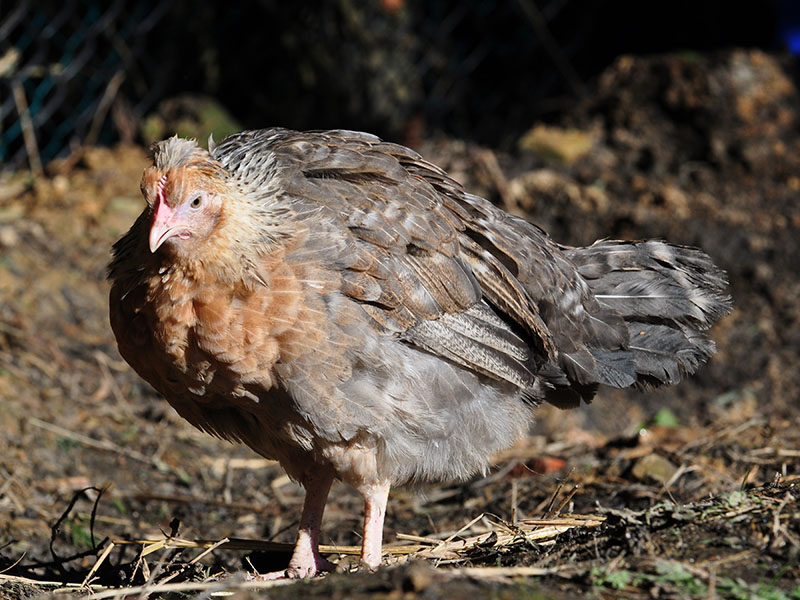Legbar Chickens
Originated from Cambridge, UK, the Legbar chicken was the second breed of auto-sexing
chickens from  Reginald Punnett. First was the Cambar, which never picked up popularity and wasn't
a very good layer, and has since gone extinct. Legbars now come in three colors, gold,
silver, and cream. The APA only recognizes the cream variety though, and the Poultry
Club of Great Britain authorized all the varieties in this order: Gold in 1945, Silver
in 1951, and Cream in 1958.
Reginald Punnett. First was the Cambar, which never picked up popularity and wasn't
a very good layer, and has since gone extinct. Legbars now come in three colors, gold,
silver, and cream. The APA only recognizes the cream variety though, and the Poultry
Club of Great Britain authorized all the varieties in this order: Gold in 1945, Silver
in 1951, and Cream in 1958.
Gold Legbars were developed from brown Leghorn cocks and Barred Plymouth Rock hens, and Silver Legbars were made from the Golds, crossed with Silver Cambars, and some White Leghorn added into those crosses for improved laying ability.
Cream was a little more complicated; although it must have been worth it, because they're the most popular variety today because they are blue egg layers.
In 1939, Michael Pease developed the Cream variety through multiple instances of inbreeding between Gold Legbars and White Leghorn crosses, to bring out more recessive genes present in the Leghorns. This gave them a cream color, but still retained the ability to auto-sex. They were then crossed with Cream Araucanas in 1940, which gave them crests on their heads and blue eggs. These crests are enough of a stark difference to clearly distinguish them from Silver Legbars.
Characteristics
Male Legbars are about 3 kg, and the females are about 2 kg, and the breed as a whole is kept for their impressive laying ability, at 4 medium sized eggs a week. Creams are kept for auto-sexing purposes and their ability to produce blue eggs.
They are single combed, and their temperament is very docile and broody, making them easily handled. Legbars are also able to forage for themselves, and do well in a free range environment.
Auto-Sexing?
Auto-sexing is when you can see the sex of a chick, just by looking at it. Cream Legbars can be sexed by the color of their down feathers: males are a lighter brown and have a little bleached spot on the top of their heads, and females are darker and have darker still stripes down their back.
References
